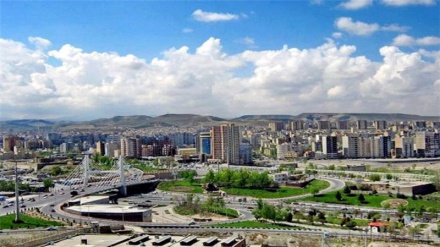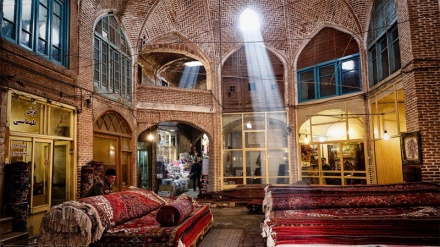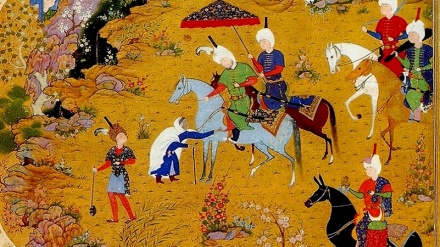Tabriz, 2018 (10)
Welcome to this week's episode of the series "Tabriz, 2018". Today, we study the history of the city of Tabriz, and two important buildings in this city.
The city of Tabriz has experienced many developments throughout its history, and has been chosen as the capital of Iran, on seven occasions. Despite a number of calamitous earthquakes which have flattened this city's buildings several times, Tabriz is home to many valuable historical monuments, which according to the related experts, are roughly five hundred in numbers.
Meanwhile, hundreds of these historical buildings of the city of Tabriz have been renovated, capturing the attention of travelers, who visit this popular tourist destination.
These historical buildings which are considered to be valuable assets and precious legacies of this city, play unique roles in manifestation of the rich culture of this city across the country, and worldwide. "Amir Nezam Garousi" Building is one of the precious buildings of this city, which has currently turned into Qajar Museum. Let's become more familiar with this building and museum.
Qajar Museum which was previously the home of one of the political figures of Qajarid era, Amir Nezam Garousi, is a stunning building with a large courtyard, packed with flowers. Upon visiting different parts of this building, we get more familiar with the history and culture of an important phase of Iran's contemporary history.
This building was bought by the Cultural Heritage Organization in the year 1991, and was later enlisted among Iran's historical monuments. Upon the renovation and reconstruction of this building, it was officially launched as Qajar Museum in the year 2006.
This museum is situated in an old neighborhood of the city of Tabriz. Very beautiful buildings were constructed in the said neighborhood in the Qajarid era.
This city turned into the place of residence of the then Qajarid crown prince, Abbas Mirza. Thereafter, the Qajarid crown princes resided in this city, while later residing in Tehran, upon being instated as king.
This interesting two-story building's foundation stands as 1,500 square meters. There are two inner and outer courtyards in this building, which redouble its beauty. Sixteen pillars hold the balcony. At the upper floor of this building, viewers observe colorful windows, and plasterworks on the southern and northern facades, which in turn add to this building's beauty. There is a pond at the basement of this building, which shapes one of the prettiest parts of this edifice. It is linked to the courtyard, and adjacent rooms via a number of corridors. There are four chambers in the eastern part of the building, with seven other chambers located in the western side. In addition to the beauties of this edifice, visitors can observe several works of art and handicrafts, which have been situated in a number of halls, belonging to the Qajarid era.
There are a number of statues of Qajarid era's prominent figures in this museum such as the statues of the Qajarid era crown prince, Abbas Mirza, and former Qajarid era premiers, Mirza Abul-Qasem Farahani, and Amir Kabir. Furthermore, there are a number of photographs on display at this museum, which have been taken during the rule of Qajarid King, Naser Ed-Din Shah. Moreover, a number of works of calligraphy, and clothing of Qajarid era are also on display.
Sharbat Oqli House is one of the other famous and ancient buildings of the city of Tabriz, which dates back to Qajarid era. This house is situated in an old neighborhood of this city and is one of the tourist attraction sites of this city.
The area covered by this house stands at 1500 square meters, and its foundation is 1300 meters. It is a three-story house, with two northern and southern courtyards. On the ground and first floors of this house, there are dining halls and inter-connected chambers, with the central hall being located at the first floor. The ground and first floors are connected to each other via a stairway.
Haaj Majid Sharbat Oqli was the owner of this house in the year 1906. He was one of the famous businessmen in this city. This house was the venue of gathering of mourning groups on the anniversaries of the martyrdom of the Third Infallible Imam of Prophet of Islam's Household, Imam Hussein (Peace be upon him).
This building was bought by the Municipality of Tabriz in the year 1990 and was turned into a community center, upon its renovation. The building was also enlisted among Iran's historical monuments in the year 2000.
MR/ME


